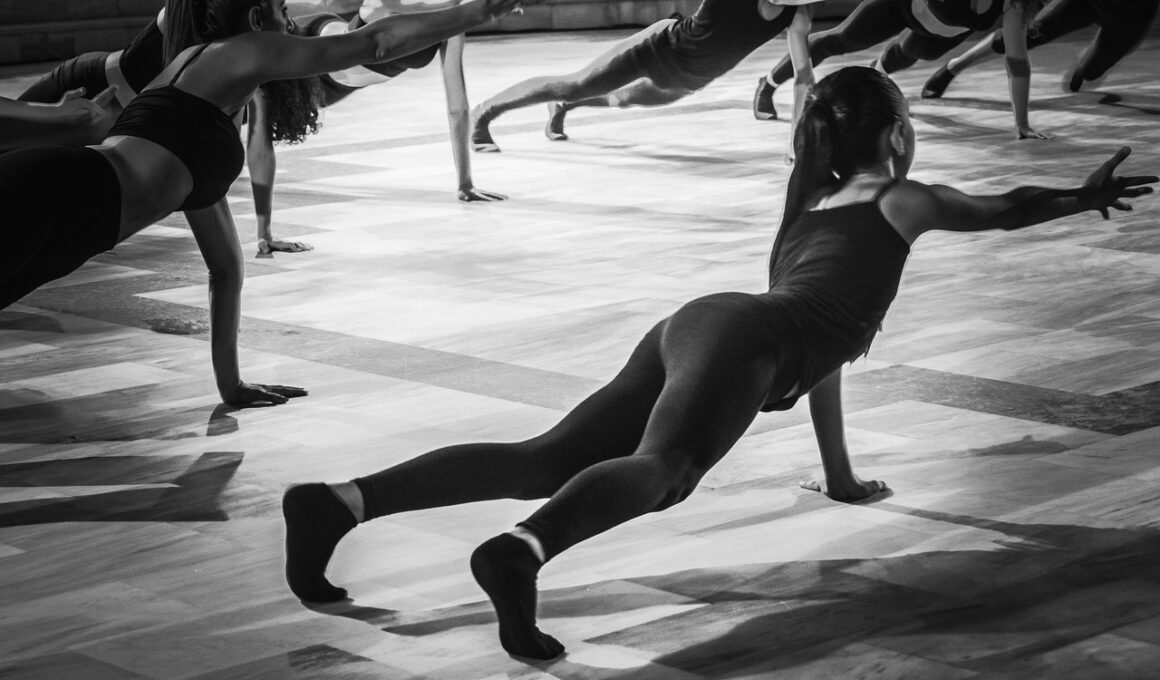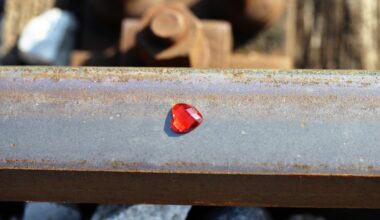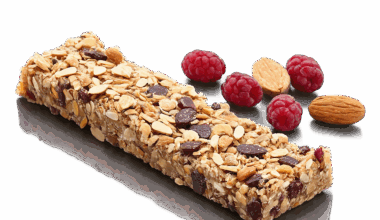Avoiding Common Footwear Mistakes in Dance Fitness
Choosing the right footwear for dance fitness is crucial for your performance and safety. Many participants tend to overlook this vital aspect, resulting in discomfort and potential injuries. It is essential to invest time in finding the perfect pair of dance shoes. First, prioritize comfort; shoes that fit well will allow for better movement and stability. Poorly fitted shoes can lead to blisters and discomfort that detract from your workout. Secondly, consider the type of dance fitness class you’re attending. Different styles may require specific footwear to provide appropriate support and flexibility. For instance, Zumba, ballet, or hip-hop have differing shoe requirements. Lastly, always test the shoes before committing to a purchase. Walk and perform a few dance steps to ensure they adapt well to your movements. Remember that essential features to look for are cushioning, arch support, and a solid grip to prevent slipping. Take note of the materials as well; breathable fabrics can make a significant difference during intense workouts.
Understanding Dance Shoe Types
When selecting dance fitness footwear, understanding various shoe types is beneficial. Dance shoes come in diverse styles, each designed for specific activities and support needs. For example, a popular choice is the cross-trainer, designed for multi-directional movements. These shoes offer excellent cushioning and ankle support, which are essential during high-energy sessions. Alternatively, dance sneakers, specifically designed for styles like Zumba, can provide flexibility and support needed for vibrant dance routines. If you participate in styles such as ballet fitness, ballet shoes may be more appropriate for enhancing your technique and footwork. Moreover, consider that certain dance classes, such as hip-hop, may favor shoes with a flat sole to ease pivoting and turning. Finally, if your preference leans towards contemporary or jazz styles, opt for split-sole shoes that allow more freedom of movement. Each type serves a distinct purpose; selecting the correct type will enhance your performance while reducing the risk of injury. Always remember to try them on and assess how they feel while dancing.
Another common mistake when choosing dance fitness footwear is neglecting the importance of trying shoes on. Often, with online shopping becoming prevalent, people may purchase footwear without trying them, which can lead to issues. The ideal way to select shoes is to visit a store where you can physically try on different options and assess their fit, comfort, and feel. When trying on shoes, do so later in the day when your feet are slightly swollen; this helps ensure that the shoes will be comfortable throughout your workout. Pay attention to the width as well; a snug fit without being overly tight is essential for preventing blisters. Additionally, check that your toes have enough space to move, as cramped shoes can lead to pain during your fitness routine. Don’t shy away from seeking assistance from staff in the store; they can provide valuable insights and help you select the right pair based on your specific fitness goals and the type of dance you enjoy most. Ultimately, dedicating time to this process pays off in enhanced comfort.
The Role of Material in Dance Footwear
Material is a crucial factor when it comes to dance fitness footwear. The materials used in making dance shoes can impact both performance and comfort. Breathable materials are particularly important as they allow for airflow, keeping your feet dry and cool during intense workouts. Look for shoes made with mesh or synthetic materials that provide not only breathability but also flexibility. Leather shoes can offer a more structured fit, but may not provide the same breathability as synthetic counterparts. Additionally, focus on the insoles; good cushioning materials will absorb shock effectively and reduce the stress on your joints. Check for removable insoles as well; these can allow for custom orthotics if you need additional arch support. Furthermore, consider the outsole material; rubber soles commonly grant better traction and grip, essential for preventing slips and falls. Different footwork demands require suitable materials to ensure optimum performance while minimizing the risk of injury. Investing in quality materials will enhance your dance experience while keeping you safe and comfortable.
Footwear maintenance is another often overlooked component of ensuring longevity and performance in your dance fitness shoes. Neglecting proper care can significantly shorten the lifespan of your footwear, leading to premature replacement and unnecessary expenses. After each use, make it a habit to wipe down your shoes, particularly the soles, to remove any residue that may affect grip and traction. This can be crucial as dirt and grime can build up, making your shoes slippery and unsafe. Additionally, if your shoes become damp due to sweat, allow them to dry fully; stuff them with newspaper to help absorb moisture and maintain their shape. Avoid leaving them in direct sunlight, as this can warp the materials and affect their elasticity. It’s advisable to have multiple pairs in rotation to allow them to rest between uses; this can help prolong their life. Speaking of replacement, be mindful of when to get new shoes; frequent wear may necessitate replacing them sooner than you’d expect for optimal performance and safety during your workouts.
Listening to Your Body
Another critical aspect to consider is listening to your body while dancing. Our feet and body often provide essential feedback on how well our footwear is working for us. If you experience discomfort or unusual soreness during classes, it may indicate that your shoes aren’t fitting your needs. For instance, if you find that your shoes are causing blisters or numbness, it may signal tightness or poor support. Pay attention to these signals; ignoring them may lead to more serious injuries down the line. Similarly, it’s vital to recognize how your shoes feel during various movements. Shoes that work well for one type of exercise may not be suitable for others. If certain techniques feel labored or difficult, it could mean your shoes are affecting your performance. Don’t hesitate to address any discomfort. If you find that your current pair isn’t accommodating, it may be time for a new search. Prioritizing comfort will enhance your enjoyment and effectiveness in dance fitness classes and prevent burnout from discomfort.
In conclusion, avoiding common footwear mistakes is essential for anyone participating in dance fitness. Proper footwear not only enhances performance but also contributes to overall safety during exercise. When selecting shoes, prioritize features like comfort, fit, and material quality to suit your unique needs. Remember to consider the type of dance fitness class and choose the appropriate shoe style for it. Additionally, don’t overlook the importance of maintenance and listening to your body’s feedback. Regularly caring for your shoes will help ensure their longevity and performance. Being aware of when to replace footwear is equally crucial for injury prevention. When you invest the time and effort into selecting the right footwear, it can significantly impact your dance fitness experience positively. Thus, maintaining your shoes and being attentive to your body’s signals will create a safer and more enjoyable fitness journey. Ultimately, comfortable and appropriate footwear can make a world of difference, paving the way for success in your dance fitness endeavors.
Considerations for Future Dancers
For those just starting their dance fitness journey, understanding the fundamentals of footwear selection can set a strong foundation. Starting off with the correct shoes may help prevent discomfort and injuries down the line. Although this may seem like a small aspect of your fitness routine, it’s critical for longevity in this lifestyle. Be proactive about seeking guidance and gathering information on the types of shoes best suited for different dance styles. Get familiar with reputable brands and options available in your area or online. Research reviews and feedback from other dancers, particularly those who share similar preferences and body types. Engage with your dance community; they can offer valuable insights based on their experiences and recommendations. Additionally, keep abreast of any innovations in footwear technology that may enhance comfort and performance. The trend in today’s market often leans toward shoes that combine style with function, providing greater versatility for various workouts. Making informed choices early in your dance fitness journey will increase your confidence and enjoyment.


